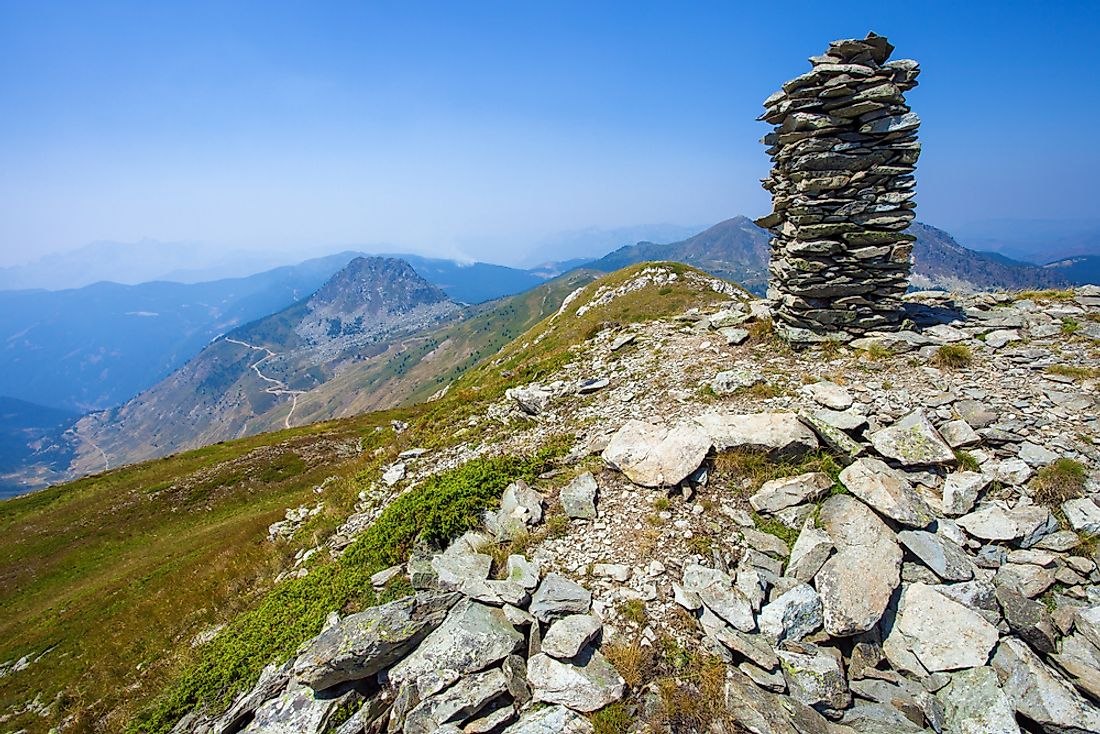Which Countries Border Montenegro?

Montenegro is one of the smallest nations in Europe. Throughout Montenegro's history, several communities exerted their influence in the region which would later have a significant impact on the shape of the country's boundaries. The Slavic people established some of the kingdoms that impacted the shape of Montenegro's borders, and they included Duklja, Rascia, and Travunia. In the present-day, the land borders of Montenegro cover a distance of roughly 422 miles. Montenegro shares its land limits with four nations of Bosnia and Herzegovina, Serbia, Albania, and Croatia, and one disputed territory of Kosovo.
Development Of The Montenegrin Border
The border of Montenegro had gone through many significant changes before it assumed its present-day shape. From the 15th century to the 20th century, a section of Montenegro's territory, then referred to as Ottoman Montenegro, was under the control of the Ottoman Empire. Another section of the country's territory was under the control of the Republic of Venice. Even though the Ottomans controlled a vast chunk of Montenegro's territory, their control was limited to small town centers. The rural areas were under the control of local clans. Nicholas I was one of the most influential leaders in Montenegro's history as he managed to increase Montenegro's territory by more than 1,900 square miles through political maneuvering.
The Border With Bosnia And Herzegovina
Montenegro and Bosnia and Herzegovina are separated by a border roughly 150 miles long that is situated on the northern edge of Bosnia. A section of the border traces the same path as the Tara River. There are several towns located on the Montenegrin side of the border, and they include Kotor and Budva. There are also several towns on the Bosnian side of the border such as Bileca, Cajnice, and Avtovac.
In 2015, the governments of Montenegro and Bosnia and Herzegovina were involved in a border dispute. The root of the conflict was the fact that a section of the Bosnian leadership wanted to take control of some territory in Montenegro. Because of the dispute, the president of Montenegro had held back on appointing an ambassador to Bosnia. The Bosnian parliament prevented the issue from escalating as they chose to reject the proposal brought before them.
Border With Serbia
A 98-mile border separates Montenegro from Serbia. The boundary is situated on the eastern edge of Montenegro. There are several towns situated on the Montenegrin side of the border such as Trpezi, Rozaje, and Crnca. The towns located on the Serbian side of the border include Sjenica, Duga Poljana, and Nova Varos. There are some minor rivers that cross the Serbia Montenegro border at several points.
According to the Balkan Insight website, in 2008, Montenegro and Serbia were involved in a border dispute over the control of a forest situated between Montenegrin town of Pljevlja and the Serbian town of Prijepolje. The two governments also had differing views on the status of the Kosovo border which stalled talks between two countries.
The Border With Kosovo
Montenegro shares a border with the disputed territory of Kosovo that extends for roughly 47 miles in the eastern section of Montenegro. The border with Kosovo has been one of Montenegro's most contentious borders because the Serbian government still considers Kosovo as part of its territory.
According to information on Open Democracy website, efforts by the governments of Kosovo and Montenegro to formalize the border between the two countries faced significant opposition in Kosovo. Several of the leaders from Kosovo believed that the border would cause Kosovo to lose a significant part of its territory to Montenegro.
The Border With Albania
Albania and Montenegro share a border of roughly 115 miles long situated in the southern section of Montenegro. The largest lake in the southern region of Europe, Skadarsko Jezero, is located on the border between the two countries. Apart from the lake, there are also other smaller rivers that cross the border along various points. There are several towns on the Albanian side of the border such as Trush, Neshat, and Shkoder. Some of the towns located on the Montenegrin side of the border include Krute, Pistula, and Ulcinj.
The Border With Croatia
Montenegro's shortest land border is shared with Croatia which is roughly 11 miles long and is situated on the western edge of Montenegro. Montenegro and Croatia also share a maritime border in the Adriatic Sea. There are several towns located on the Croatian side of the border such as Dubrovnik and Gruda. Many towns are also located close to the border on the Montenegrin side such as Herceg-Novi, Risan and Tivat.
The Croatian government formally recognized Montenegro as an independent nation in 2006. Roughly one month after recognizing Montenegro, the two nations developed formal diplomatic ties. The Croatian government is represented by an embassy located in Podgorica as well as a consulate general situated in Kotor. The Montenegrin government, on the other hand, is represented by an embassy located in Zagreb.
Security Along The Montenegrin Border
One of the most critical issues to the Montenegrin government is the security of the border particularly in the wake of the migrant crisis. In 2018, the Montenegrin government declared that it would send a section of the country's army to the border with Albania to prevent illegal immigrants from crossing into its territory. It was reported that the Montenegrin government was considering building a barrier along its border, but Prime Minister Dusko Markovic said that the government was not considering such plans.











